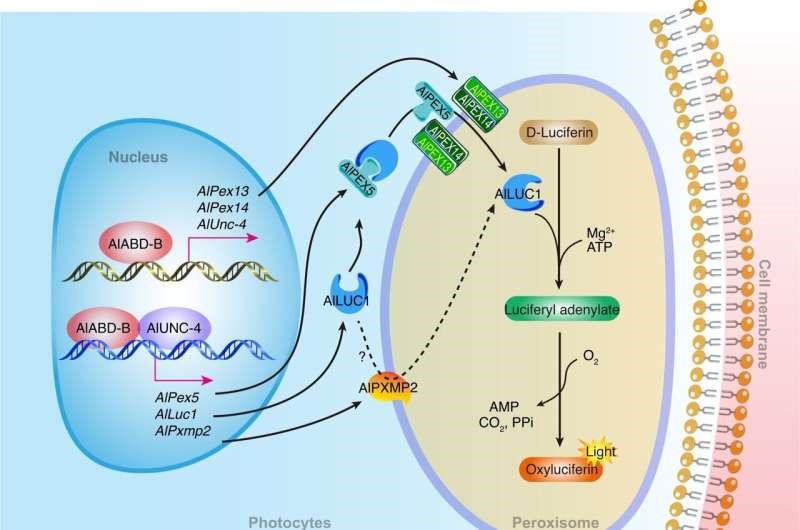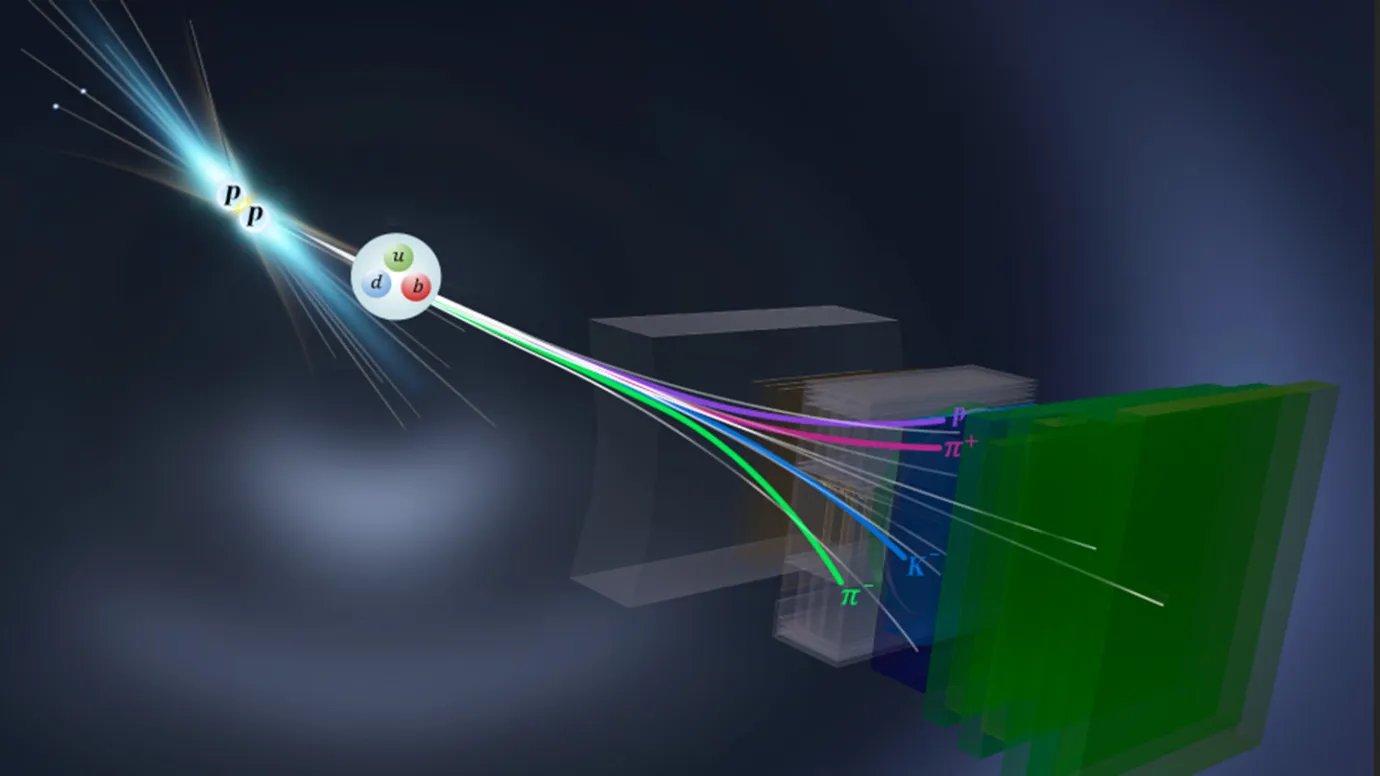Description

Disclaimer: Copyright infringement not intended.
Context
- A recent study published in Nature Communications by Xinhua Fu and Xinlei Zhu, bio-researchers from Huazhong Agricultural University and the Firefly Conservation Research Center in China, respectively, has identified key transcription factors responsible for regulating the development of light organs and bioluminescence in fireflies.
Details
Background
- Fireflies, a family of soft-bodied beetles, are renowned for their luminescent organs.
- Fireflies undergo a larval stage, known as glowworms, before maturing into adults capable of glowing and flying.
- The researchers focused their study on Aquatica leii, a species inhabiting rice paddies in China, to understand how fireflies transition from larval to adult stages and control their glowing lanterns.
Research Findings
- The study aimed to elucidate the mechanisms underlying the transformation of light organs from protective structures in larvae to glowing lanterns in adults.
- Genomic analysis revealed the involvement of eight specific homeobox genes, which regulate anatomical features during embryonic development, in this process.
- The transcription factor AlABD-B emerged as a major regulator of light organ development, interacting with another transcription factor, AlUNC-4.
- The combined action of AlABD-B and AlUNC-4 activated the AlLuc1 gene, crucial for producing the glowing enzyme luciferase.
- Additionally, three other genes—AlAp2, AlRepo, and ALAntp—were identified as part of the regulatory network controlling this transformation.
Light Organs and Bioluminescence in Fireflies
- Bioluminescence in fireflies is a biochemical reaction involving the enzyme luciferase, the substrate luciferin, oxygen, and ATP.
- This reaction produces light with minimal heat emission, resulting in the characteristic glow of fireflies.
Structure of Light Organs
- Location: Light organs are located in the abdominal segments of firefly larvae, pupae, and adults.
- Composition: Light organs consist of specialized cells called photocytes, which contain the necessary components for the bioluminescent reaction, including luciferase and luciferin.
- Arrangement: In some species, the arrangement of photocytes within the light organ forms intricate patterns that influence the flash pattern emitted by the firefly.
Bioluminescent Signaling
- Mate Attraction: Adult fireflies use bioluminescent signaling to attract mates. Males and females of the same species communicate through specific flash patterns, which vary in duration, intensity, and frequency.
- Species Recognition: Bioluminescence also plays a crucial role in species recognition, allowing fireflies to distinguish between potential mates of their own species and those of other species.
- Predator Deterrence: In addition to mate attraction, bioluminescence may serve as a warning signal to predators, deterring them from consuming fireflies due to their association with distasteful or toxic compounds.
Regulation of Bioluminescence
- Neural Control: The production and modulation of bioluminescence in fireflies are regulated by neural signals. Nervous impulses trigger the release of neurotransmitters that stimulate photocytes to initiate the bioluminescent reaction.
- Environmental Factors: Environmental factors such as temperature, humidity, and light intensity can influence the timing and frequency of bioluminescent flashes in fireflies.
Evolutionary Significance
- Adaptations: The evolution of bioluminescence and light organs in fireflies is believed to have provided adaptive advantages, including enhanced communication, mate attraction, and predator deterrence.
- Co-evolution: The diversity of bioluminescent signals and light organ structures among firefly species reflects co-evolutionary relationships shaped by ecological interactions with other organisms, such as predators and potential prey.
Biotechnological Applications
- Bioluminescent Assays: The luciferase-luciferin reaction found in fireflies is widely used in biotechnological applications, including bioluminescent assays for detecting ATP, monitoring gene expression, and studying cellular processes.
- Biomedical Imaging: Luciferase reporter genes are employed in biomedical research for non-invasive imaging of gene expression, cell tracking, and disease progression in living organisms.
.jpg)
Fireflies
- Definition and Characteristics: Fireflies, scientifically known as Lampyridae, are a family of beetles known for their bioluminescent properties. They belong to the order Coleoptera and are primarily nocturnal insects.
- Distribution: Fireflies are found worldwide, with diverse species inhabiting various ecosystems, including forests, grasslands, wetlands, and urban areas.
- Life Cycle: Fireflies undergo complete metamorphosis, with egg, larval, pupal, and adult stages. The larvae and adults of many species exhibit bioluminescence.
Bioluminescence
- Bioluminescence is the biochemical production and emission of light by living organisms through a chemical reaction.
Mechanism
- Chemical Reaction: Bioluminescence is typically initiated by a chemical reaction involving a luciferin substrate, oxygen, and an enzyme called luciferase.
- Energy Release: During the reaction, chemical energy is converted into light energy, resulting in the emission of photons.
- Adaptations: Organisms have evolved specific adaptations in their luciferase-luciferin systems to produce light efficiently under various conditions.
Ecological Functions of Bioluminescence
- Communication: Bioluminescence serves as a means of communication between organisms for mating, territorial defense, and predator avoidance.
- Camouflage: Some organisms use bioluminescence for camouflage, matching the ambient light to blend into their surroundings.
- Predator-Prey Interactions: Bioluminescent displays can attract prey or serve as lures to attract predators, facilitating hunting or defense strategies.
Marine Bioluminescence
- Deep-Sea Creatures: Bioluminescence is particularly prevalent in deep-sea organisms, where it aids in communication, camouflage, and attracting prey.
- Dinoflagellates: Marine dinoflagellates exhibit bioluminescence when disturbed, creating dazzling displays known as "bioluminescent blooms" or "milky seas."

Terrestrial Bioluminescence
- Fireflies: Fireflies are perhaps the most well-known terrestrial organisms capable of bioluminescence. They use light for mate attraction and species recognition.
- Fungi: Certain species of fungi, such as Mycena and Armillaria, produce bioluminescent mushrooms, likely to attract insects for spore dispersal.
Environmental Monitoring
- Bioluminescent organisms serve as indicators of environmental health and ecosystem dynamics, making them valuable for environmental monitoring.
|
PRACTICE QUESTION
Q. Understanding the mechanisms and ecological significance of bioluminescence in fireflies not only sheds light on their fascinating biology but also has practical applications in biotechnology and conservation. Comment. (150 Words)
|
















